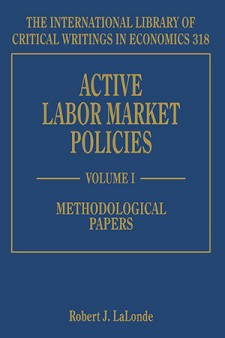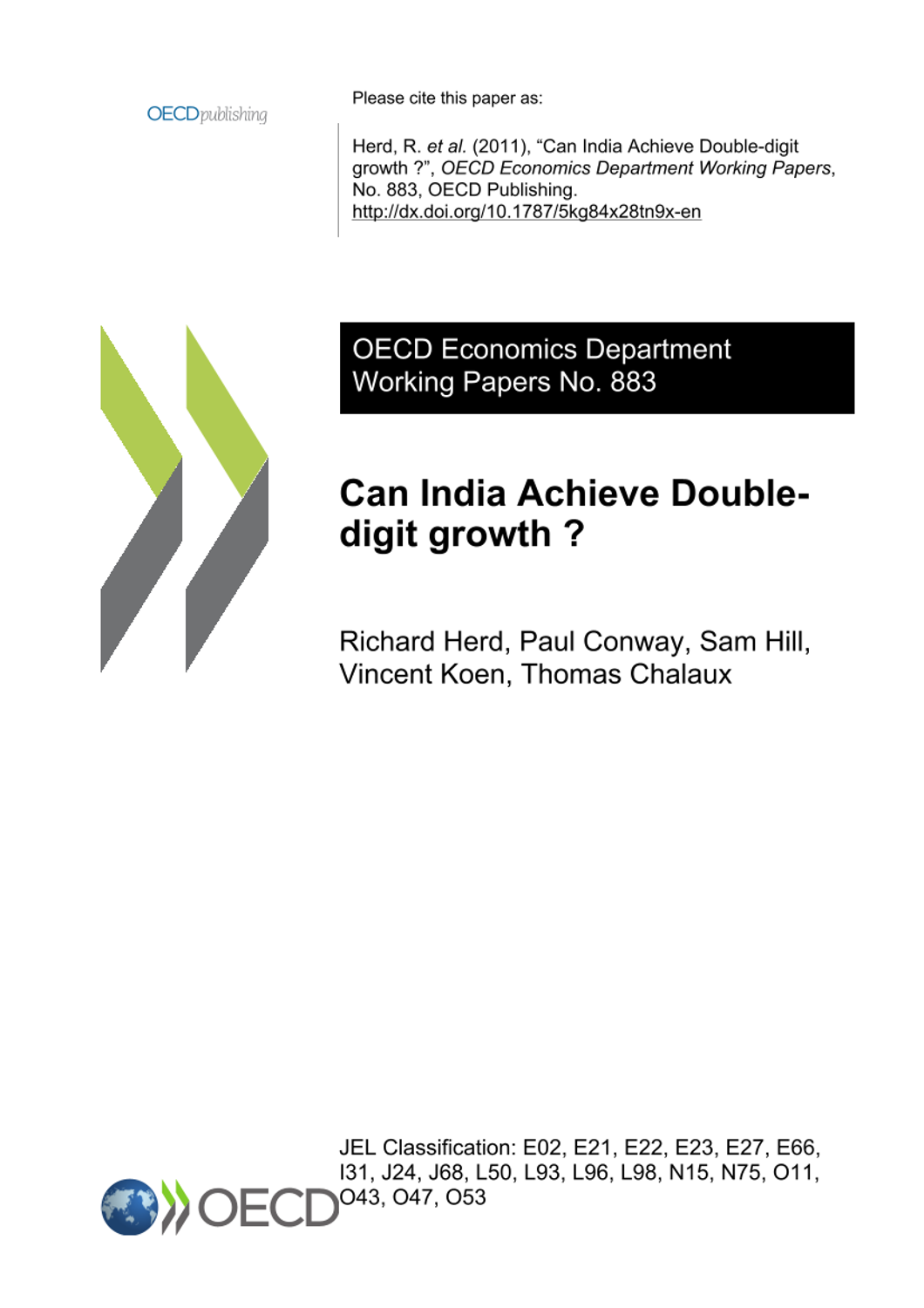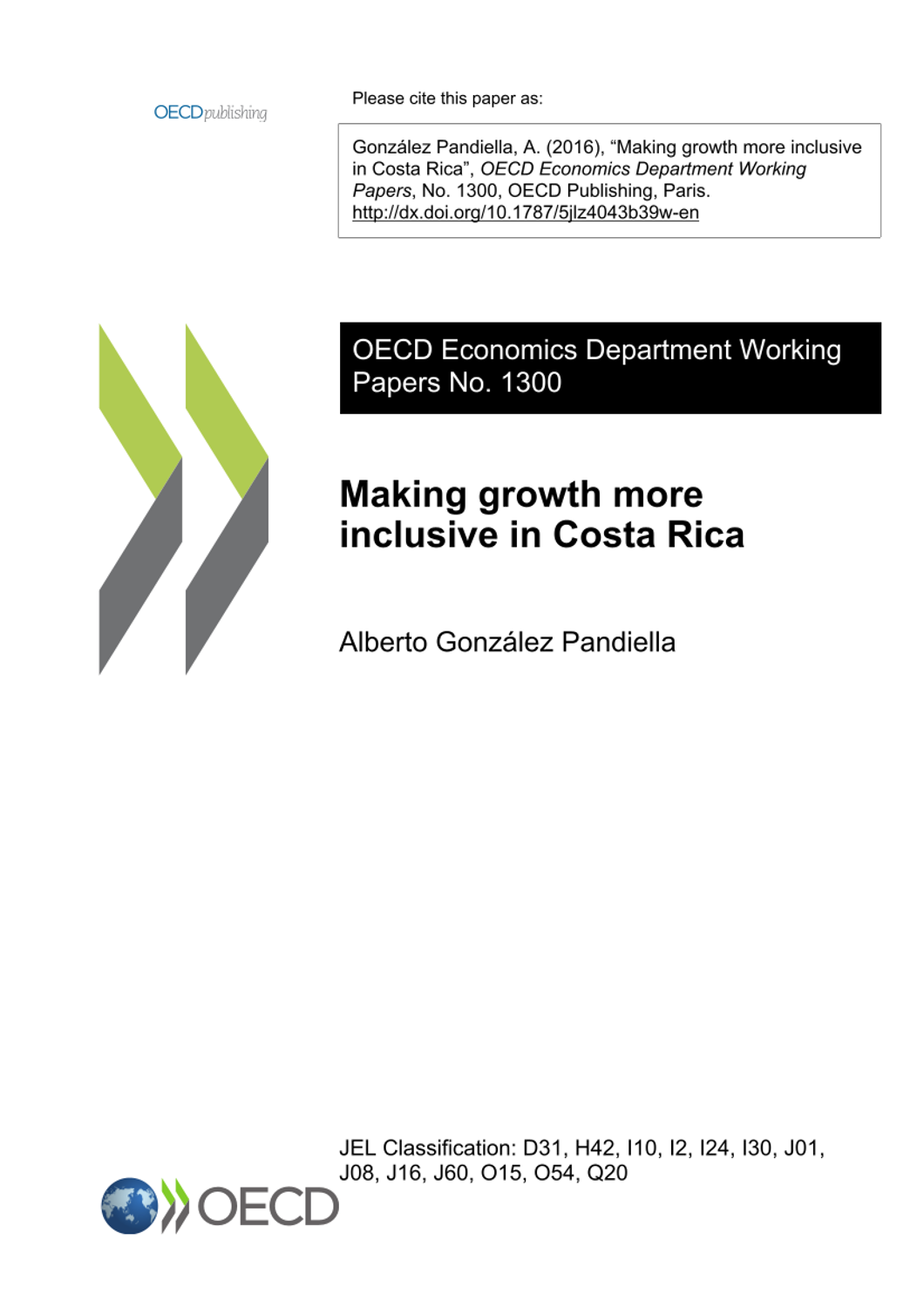
단행본The international library of critical writings in economics 318
Active labour market policies: methodological papers. vol.2
- 청구기호
- 331.12 ACT2016 V.2
- 발행사항
- United Kingdom : Edward Elgar Publishing, 2016
- 형태사항
- 972 p
- 서지주기
- Includes bibliographical references
- ISBN
- 9781783479887
- 분류기호
- 듀이십진분류법->331.12
소장정보
| 위치 | 등록번호 | 청구기호 / 출력 | 상태 | 반납예정일 |
|---|---|---|---|---|
이용 가능 (1) | ||||
| 한국노동연구원 | 00008834 | 대출가능 | - | |
이용 가능 (1)
- 등록번호
- 00008834
- 상태/반납예정일
- 대출가능
- -
- 위치/청구기호(출력)
- 한국노동연구원
책 소개
This timely two-volume set brings together seminal works on active labour market policies. Topics covered in this collection include econometric policy evaluation, social experiments, regression discontinuity designs, evaluations of active labour market policies and ending with final conclusions on evaluating the evaluations. Along with an original introduction by Professor LaLonde, this in-depth collection will be an invaluable source of reference for academics, scholars and practitioners.
목차
Acknowledgements
Introduction An Introduction by the Editor appears in Volume I
PART I SURVEYS OF EVALUATIONS OF ACTIVE LABOR MARKET POLICIES
1. David Friedlander, David H. Greenberg and Philip K. Robins (1997), ‘Evaluating Government Training Programs for the Economically Disadvantaged’, Journal of Economic Literature, XXXV (4), December, 1809–55
2. David Card, Jochen Kluve and Andrea Weber (2010), ‘Active Labour Market Policy Evaluations: A Meta-Analysis’, Economic Journal, 120, 548, November, F452–F477
PART II EVALUATIONS OF SOCIAL EXPERIMENTS
3. Howard S. Bloom, Larry L. Orr, Stephen H. Bell, George Cave, Fred Doolittle, Winston Lin and Johannes M. Bos (1997), ‘The Benefits and Costs of JTPA Title II-A Programs: Key Findings from the National Job Training Partnership Act Study’, Journal of Human Resources, 32 (3), Summer, 549–76
4. Jere R. Behrman, Susan W. Parker and Petra E. Todd (2011), ‘Do Conditional Cash Transfers for Schooling Generate Lasting Benefits?: A Five-Year Follow-up of PROGRESA/Oportunidades’, Journal of Human Resources, 46 (1), Winter, 93–122
5. Peta Z. Schochet, John Burghardt and Sheena McConnell (2008), ‘Does Job Corps Work? Impact Findings from the National Job Corps Study’, American Economic Review, 98 (5), December, 1864–86
PART III NON-EXPERIMENTAL EVALUATIONS
6. Michael Lechner (1999), ‘Earnings and Employment Effects of Continuous Off-the-Job Training in East Germany after Unification’, Journal of Business and Economic Statistics, 17 (1), January, 74–90
7. Markus Frölich, Almas Heshmati and Michael Lechner (2004), ‘A Microeconometric Evaluation of Rehabilitation of Long-Term Sickness in Sweden’, Journal of Applied Econometrics, 19 (3), May/June, 375–96 ]
8. Michael Gerfin and Michael Lechner (2002), ‘A Microeconometric Evaluation of the Active Labour Market Policy in Switzerland’, Economic Journal, 112 (482), October, 854–93
9. James J. Heckman and Paul A. LaFontaine (2006), ‘Bias-Corrected Estimates of GED Returns’, Journal of Labor Economics, 24 (3), July, 661–700
10. Louis Jacobson, Robert Lalonde and Daniel G. Sullivan (2005), ‘Estimating the Returns to Community College Schooling for Displaced Workers’, Journal of Econometrics, 125 (1-2), March-April, 271–304
PART IV HETEROGENEITY IN TREATMENT EFFECTS
11. Michael Lechner (2002), ‘Program Heterogeneity and Propensity Score Matching: An Application to the Evaluation of Active Labor Market Policies’, Review of Economics and Statistics, 84 (2), May, 205–20
12. Pedro Carneiro, James J. Heckman and Edward J. Vytlacil (2011), ‘Estimating Marginal Returns to Education’, American Economic Review, 101 (6), October, 2754–81
PART V EVALUATIONS USING IV, RD DESIGNS, AND MATCHING ESTIMATORS
13. Joshua D. Angrist (1989), ‘Lifetime Earnings and the Vietnam Era Draft Lottery: Evidence from Social Security Administrative Records’, American Economic Review, 80 (3), June, 313–36
14. Dan A. Black, Jeffrey A. Smith, Mark C. Berger and Brett J. Noel (2003), ‘Is the Threat of Reemployment Services More Effective Than the Services Themselves? Evidence from Random Assignment in the UI System’, American Economic Review, 93 (4), September, 1313–27
15. Wilbert Van der Klaauw (2002), ‘Estimating the Effect of Financial Aid Offers on College Enrollment: A Regression-Discontinuity Approach’, International Economic Review, 43 (4), November, 1249–87
16. James J. Heckman, Hidehiko Ichimura and Petra E. Todd (1997), ‘Matching as an Econometric Evaluation Estimator: Evidence from Evaluating a Job Training Programme’, Review of Economic Studies, 64 (4), October, 605–54
17. Martin Huber, Michael Lechner and Conny Wunsch (2013), ‘The Performance of Estimators Based on the Propensity Score’, Journal of Econometrics, 175 (1), July, 1–21
18. Michael Lechner and Conny Wunsch (2013), ‘Sensitivity of Matching-Based Program Evaluations to the Availability of Control Variables’, Labour Economics, 21, April, 111–21
19. Matias Busso, John DiNardo and Justin McCrary (2014), ‘New Evidence on the Finite Sample Properties of Propensity Score Reweighting and Matching Estimators’, Review of Economics and Statistics, 96 (5), December, 885–97
PART VI ACCOUNTING FOR DROPOUTS, ASHENFELTER’S DIP AND PERFORMANCE STANDARDS
20. James Heckman, Jeffrey Smith and Chrsitopher Taber (1998), ‘Accounting for Dropouts in Evaluations of Social Programs’, Review of Economic and Statistics, LXXX (1), February, 1–14
21. James J. Heckman and Jeffrey A. Smith (1999), ‘The Pre-Programme Earnings Dip and the Determinants of Participation in a Social Programme. Implications for Simple Programme Evaluation Strategies’, Economic Journal, 109 (457), July, 313–48
22. James J. Heckman, Carolyn Heinrich and Jeffrey Smith (2002), ‘The Performance of Performance Standards’, Journal of Human Resources, 37 (4), Autumn, 778–811
PART VII THE EFFECT ON DURATIONS OF UNEMPLOYMENT AND EMPLOYMENT
23. John C. Ham and Robert J. Lalonde (1996), ‘The Effect of Sample Selection and Initial Conditions in Duration Models: Evidence from Experimental Data on Training’, Econometrica, 64 (1), January, 175–205
24. Curtis Eberwein, John C. Ham and Robert J. Lalonde (1997), ‘The Impact of Being Offered and Receiving Classroom Training on the Employment Histories of Disadvantaged Women: Evidence from Experimental Data’, Review of Economic Studies, 64 (4), October, 655–82
25. Gerard J. van den Berg, Bas van der Klaauw and Jan C. van Ours (2004), ‘Punitive Sanctions and the Transition Rate from Welfare to Work’, Journal of Labor Economics, 22 (1), January, 211–41
26. Jaap H. Abbring, Gerard J. van den Berg and Jan C. van Ours (2005), ‘The Effect of Unemployment Insurance Sanctions on the Transition Rate from Unemployment to Employment’, Economic Journal, 115 (505), July, 602–30
27. Barbara Sianesi (2004), ‘An Evaluation of the Swedish System of Active Labor Market Programs in the 1990s’, Review of Economics and Statistics, 86 (1), February, 133–55
28. Peter Fredriksson and Per Johansson (2008), ‘Dynamic Treatment Assignment: The Consequences for Evaluations Using Observational Data’, Journal of Business and Economic Statistics, 26 (4), October, 435¬–45
PART VIII EVALUATING THE EVALUATIONS
29. Daniel Friedlander and Philip K. Robins (1995), ‘Evaluating Program Evaluations: New Evidence on Commonly Used Nonexperimental Methods’, American Economic Review, 85 (4), September, 923–37
30. Rajeev H. Dehejia and Sadek Wahba (1999), ‘Causal Effects in Nonexperimental Studies: Reevaluating the Evaluation of Training Programs’, Journal of the American Statistical Association, 94 (448), December, 1053–62
31. Rajeev H. Dehejia and Sadek Wahba (2002), ‘Propensity Score-Matching Methods for Nonexperimental Causal Studies’, Review of Economics and Statistics, 84 (1), February, 151–61
32. Juan Jose Diaz and Sudhanshu Handa (2006), ‘An Assessment of Propensity Score Matching as a Nonexperimental Impact Estimator: Evidence from Mexico’s PROGRESA Program’, Journal of Human Resources, 41 (2), Spring, 319–45
33. Stevem Glazerman, Dan M. Levy and David Myers (2003), ‘Nonexperimental versus Experimental Estimates of Earnings Impacts’, Annals of the American Academy of Political and Social Science, 589, September, 63–93
34. Charles Michalopoulos, Howard S. Bloom and Carolyn J. Hill (2004), ‘Can Propensity-Score Methods Match the Findings from a Random Assignment Evaluation of Mandatory Welfare-to-Work Programs?’, Review of Economics and Statistics, 86 (1), February, 156–79
35. Jeffrey A. Smith and Petra E. Todd (2005), ‘Does Matching Overcome LaLonde’s Critique of Nonexperimental Estimators?’, Journal of Econometrics, 125 (1-2), March-April, 305–53
36. Elizabeth Ty Wilde and Robinson Hollister (2007), ‘How Close Is Close Enough? Evaluating Propensity Score Matching Using Data from a Class Size Reduction Experiment’, Journal of Policy Analysis and Management, 26 (3), Summer, 455–77




